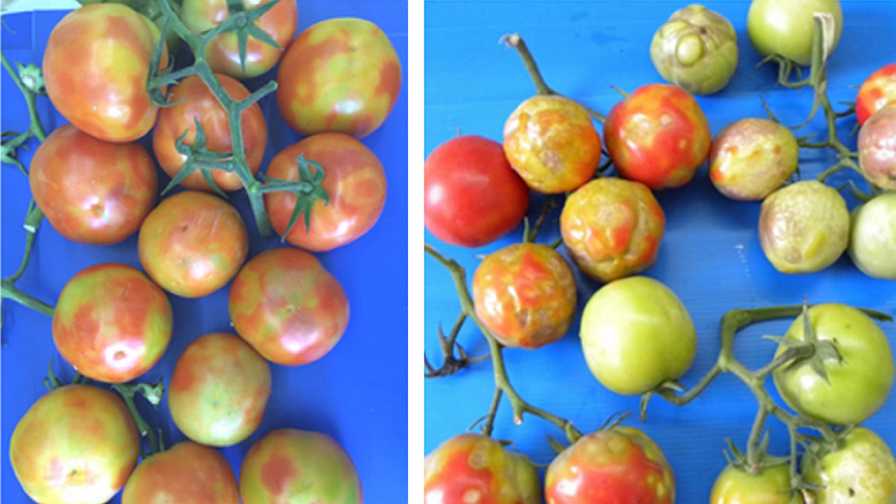Get a Jump on the Tomato Brown Rugose Fruit Virus

Just some of the symptoms of the tomato brown rugose fruit virus.
Photos courtesy of Luria et al., 2017
A new species of tobamovirus viruses is causing chaos for U.S. tomato and pepper growers after recent discoveries of tomato brown rugose fruit virus (ToBRFV) in packaged shipments from Mexico. ToBRFV is a credible threat to spread without being properly checked.
Late last month, the USDA issued a Federal Order to institute new testing protocols and the expansion of visual inspections of tomatoes and peppers coming into the U.S. from Mexico.
ToBRFV can cause severe fruit loss in tomatoes and peppers. It is easily spread through use of contaminated tools, hands, and plant-to-plant contact. It was first reported in tomatoes in Israel in 2014. Since then, it has been reported multiple areas around Europe, the Middle East, and North America. The virus was detected and eradicated from a California tomato greenhouse in 2018.
ToBRFV has already received an “A” pest-rating profile from the California Department of Food and Agriculture with the notation: “Because of suitable hosts and climate, it is likely ToBRFV can establish a widespread distribution in California wherever tomato and pepper plants are cultivated [and] crop production and quality of consumable fruit can be affected significantly [thereby] impacting their market value.”
Hazera Seeds Ltd. recently produced and released a training video for growers on ToBRFV. Plant pathologists in the video stress strict sanitation and enhanced plant disease management methods.
A few helpful tips from the video include:
- Use certified seed
- Wear protective clothing (long coat, disposable gloves and shoe covers)
- Disinfect tools before use and avoid tool exchange between compartments
- Restrict entrance of unauthorized staff
- Minimize spread by avoiding crop overlap
Watch the video for more.








